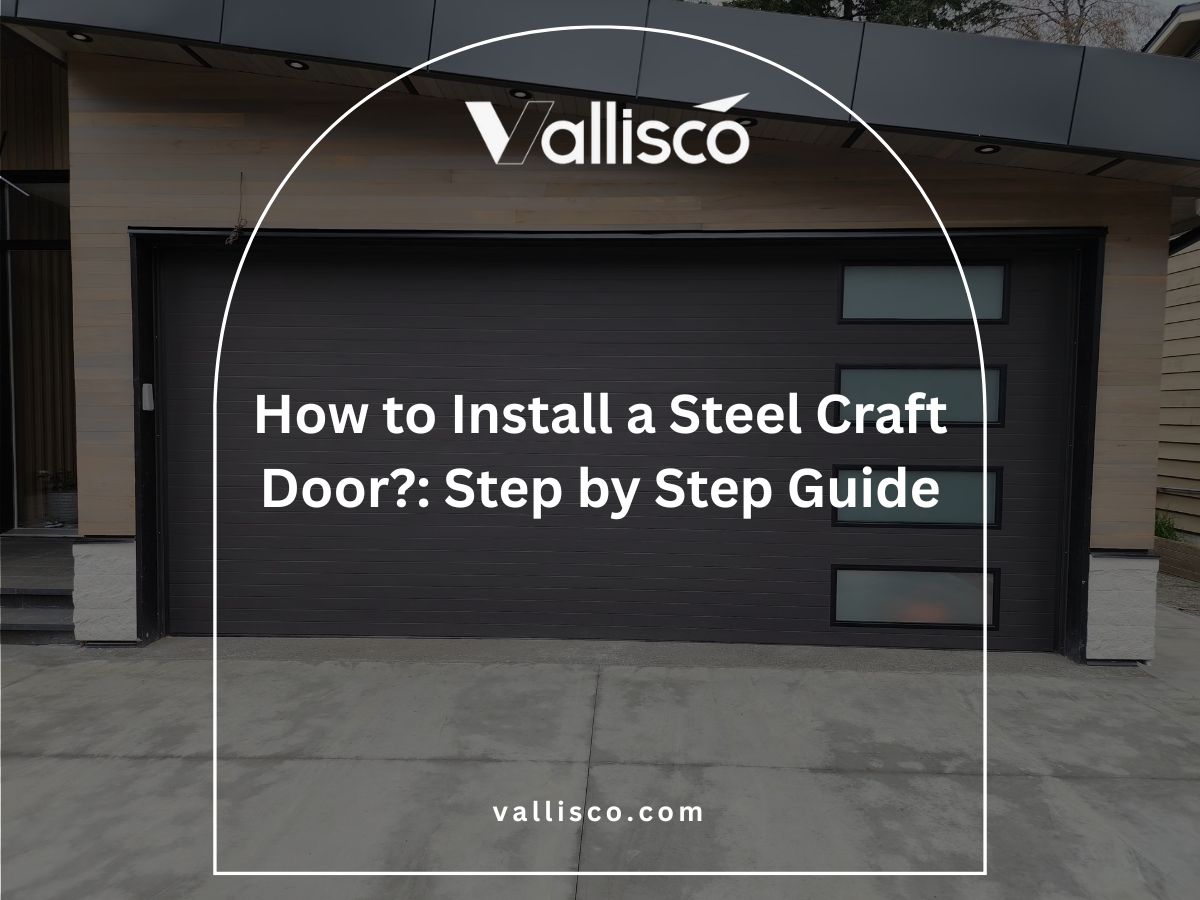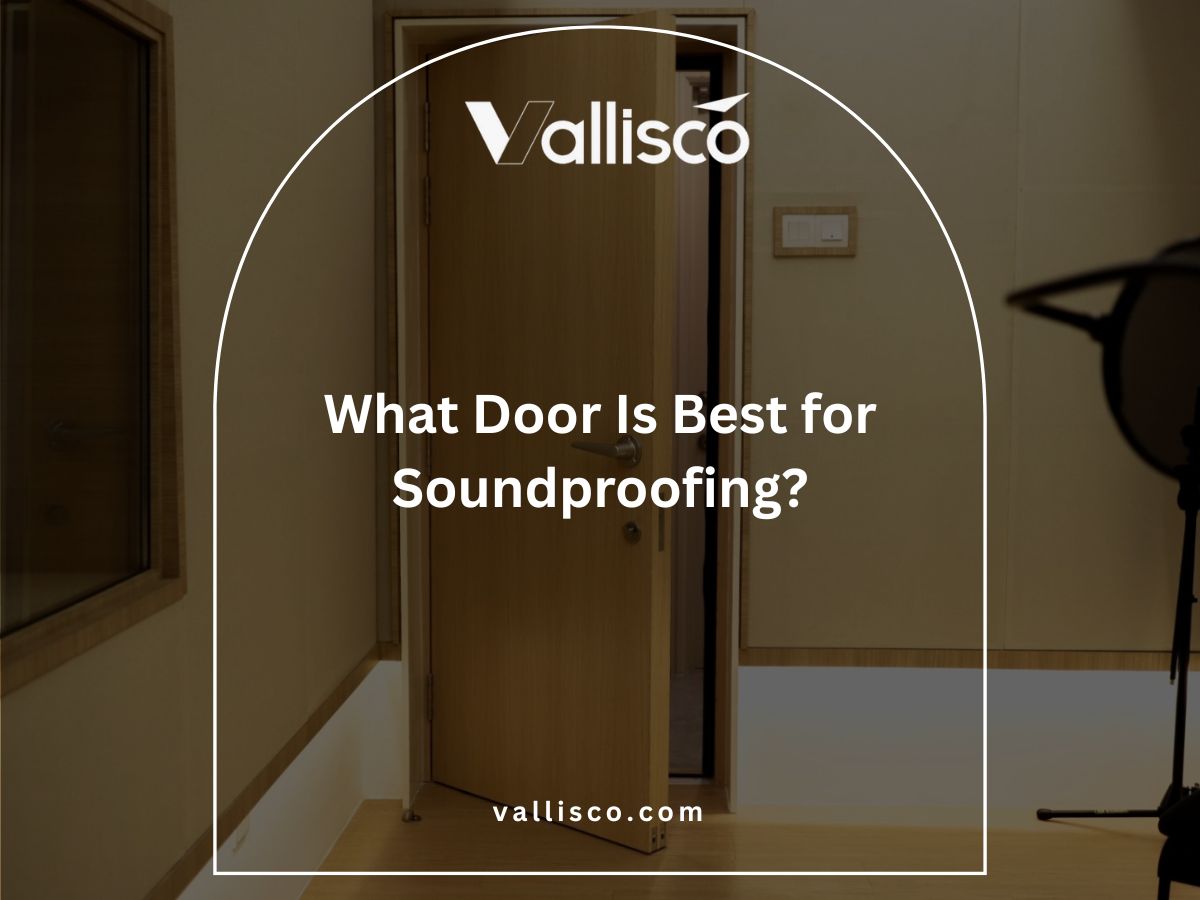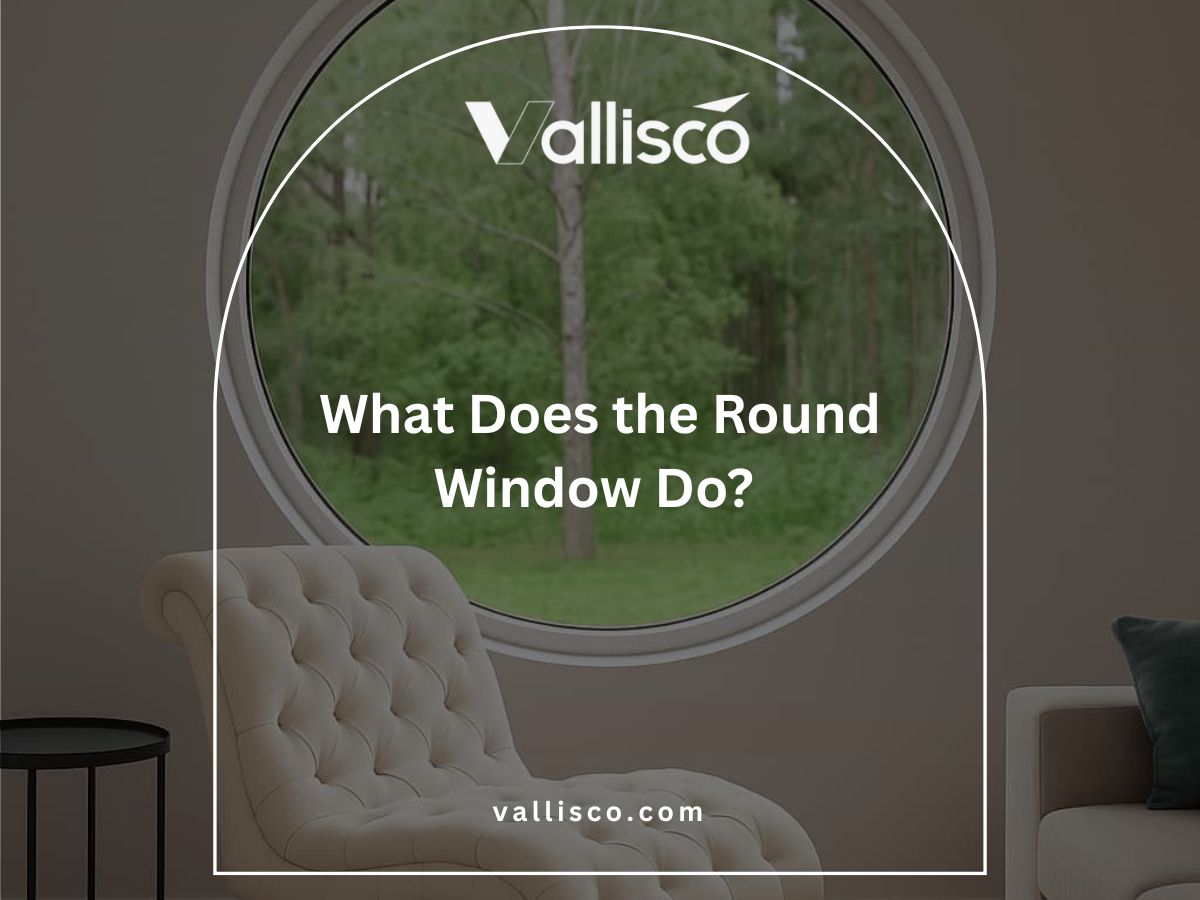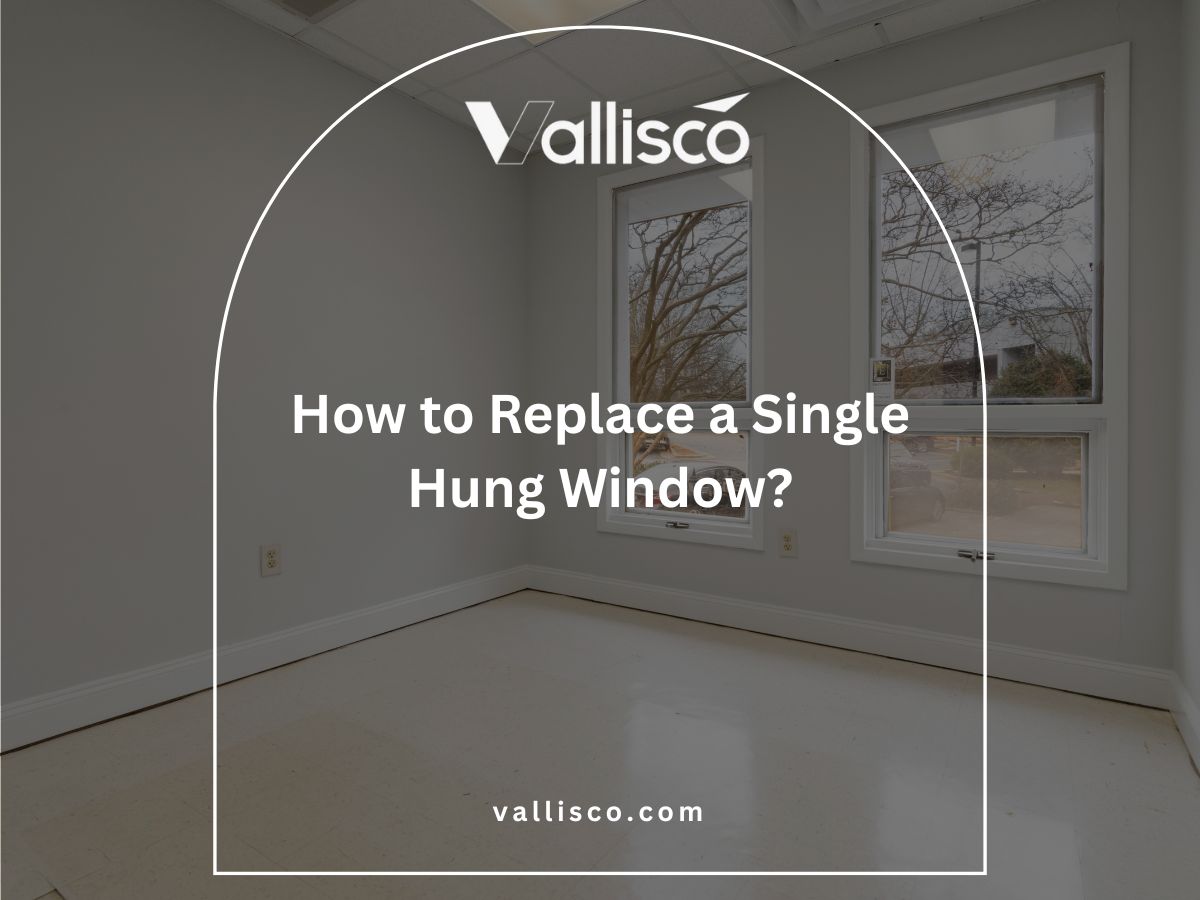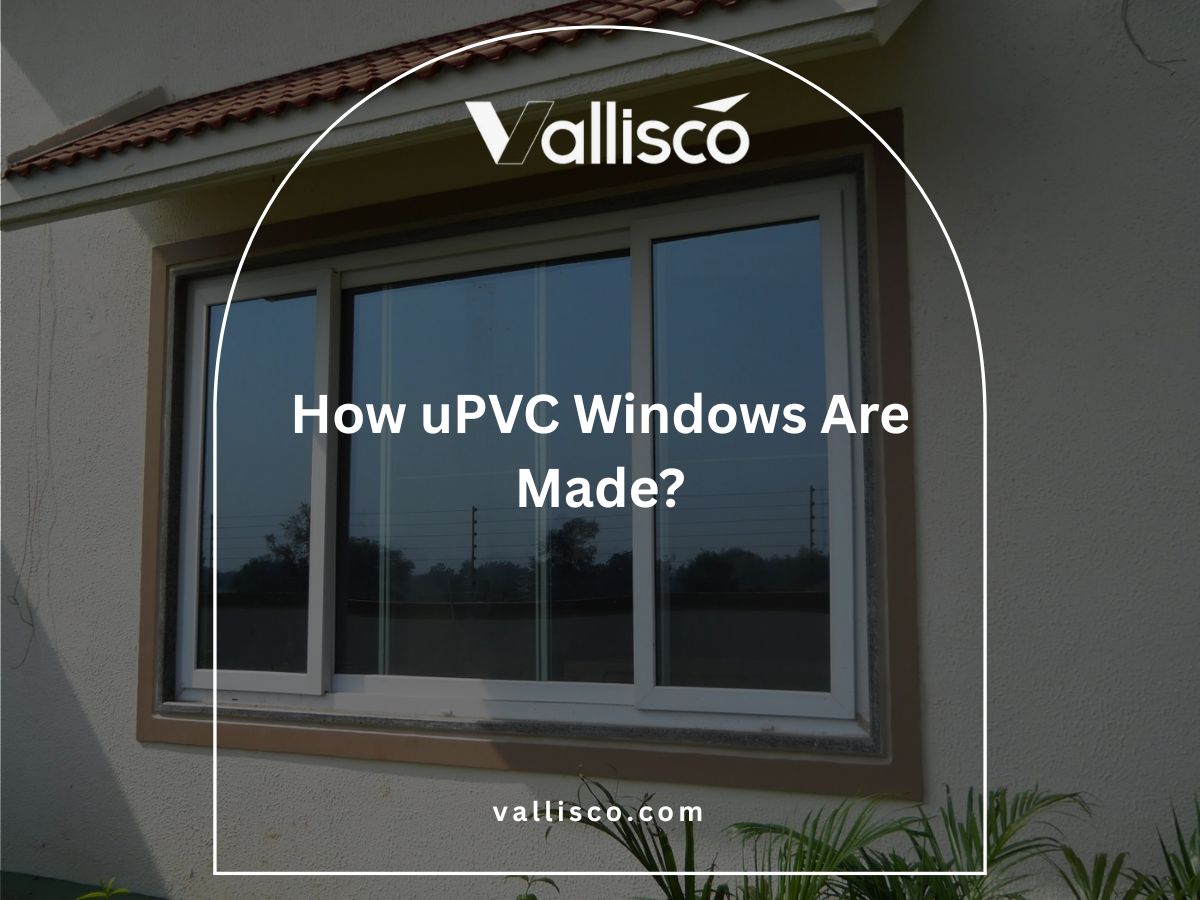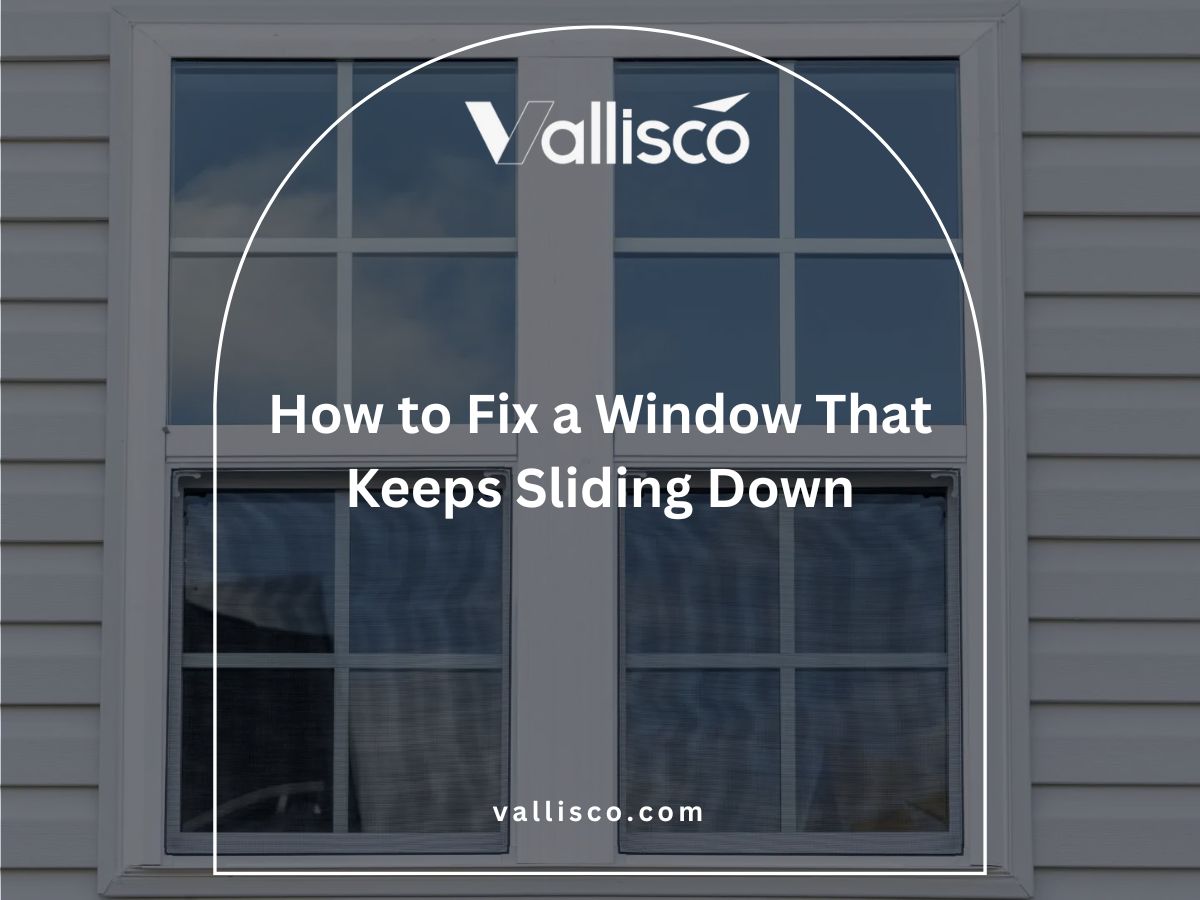A customer once chose a classic wooden front door for their project. It looked beautiful, warm, solid, everything they wanted.
But after just one season of harsh sun and heavy rain, things changed. The finish started to fade. The door didn’t close as smoothly. They were disappointed. And honestly, so was I.
As someone who’s worked with front doors for years helping people choose the right material for their spaceI’ve learned that appearance is just one part of the decision. What really matters is how the door holds up over time.
In this article, I’ll walk you through the real difference between fiberglass and wood front doors how they age, how much care they need, and what kind of value they offer in the long run.
By the end, you’ll have what you need to choose a door that not only looks good, but makes sense for your project.
So let’s get started!
Quick Comparison Chart
Before we dive into the full breakdown, here’s a quick side-by-side look. This chart gives you a fast glimpse of what each door type brings to the table.
| Feature / Factor | Fiberglass Front Door | Wood Front Door |
| Appearance | Can mimic wood grain or have a smooth, modern look; finish stays consistent for years | Natural grain and texture; each piece is one-of-a-kind |
| Strength & Security | Reinforced core resists dents, warping, and cracking even in harsh climates | Dense and solid when new; can weaken without proper care |
| Maintenance Needs | Low maintenance; occasional cleaning and annual inspection | Higher maintenance; regular sealing, painting, and repairs needed |
| Insulation Performance | Foam-filled core for higher R-value; great for extreme climates | Solid wood; lower insulation unless extra material is added |
| Design Flexibility | Many pre-made styles; limited customization once built | Fully customizable in shape, finish, and detailing |
| Sustainability | Long lifespan reduces waste; not biodegradable; harder to recycle | Renewable material; easier to recycle or repurpose |
| Not Ideal For | Projects needing high custom detailing or major style changes after installation | Constantly wet or highly humid environments without a covered entryway |
| Best For | High-traffic areas, extreme weather, long-term low upkeep | Heritage projects, mild climates, high visual impact |
Now that you’ve seen the big picture, let’s take a closer look at each material starting with fiberglass.
1. What Is a Fiberglass Front Door?
I first worked with fiberglass doors on a coastal villa project. The owner wanted something that could handle salty air and strong winds without constant upkeep. A fiberglass door is made from molded fiberglass skins wrapped around a core. The core is often filled with foam insulation, known as an R-value core, which helps keep indoor temperatures stable.
When you choose fiberglass, you are getting a surface that resists warping, rusting, and rotting even in harsh climates. It is also lightweight yet strong, which makes installation easier. I have seen these doors hold their shape and color for years, even in busy hotel entrances. That kind of reliability is hard to overlook.
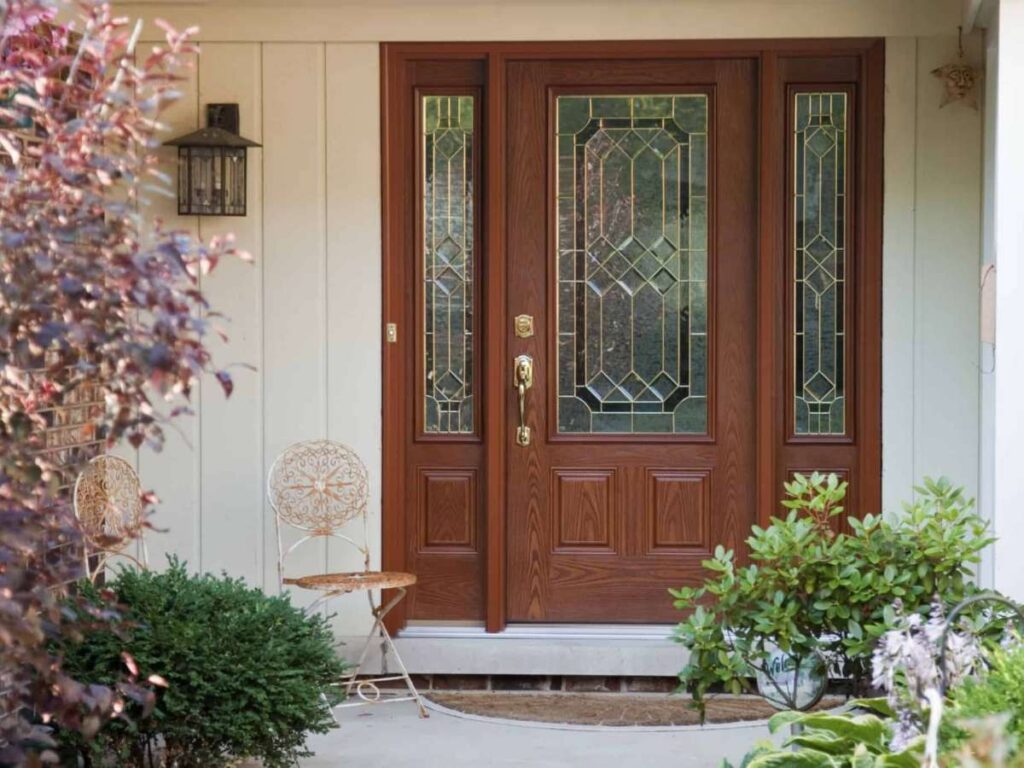
2. What Is a Wood Front Door?
One of my earliest projects was restoring a wooden front door on an old countryside inn. A wood front door is typically made from solid hardwood like oak, mahogany, or maple. Some are built with engineered wood, which is a combination of wood layers glued together for stability. This material offers a natural look that many people connect with tradition and craftsmanship.
When you choose wood, you are getting a door that can be stained or painted to match your exact style. It feels solid when you open it and has a timeless presence that is hard to match. I have seen wood doors last for decades with the right care, becoming a defining feature of the property.
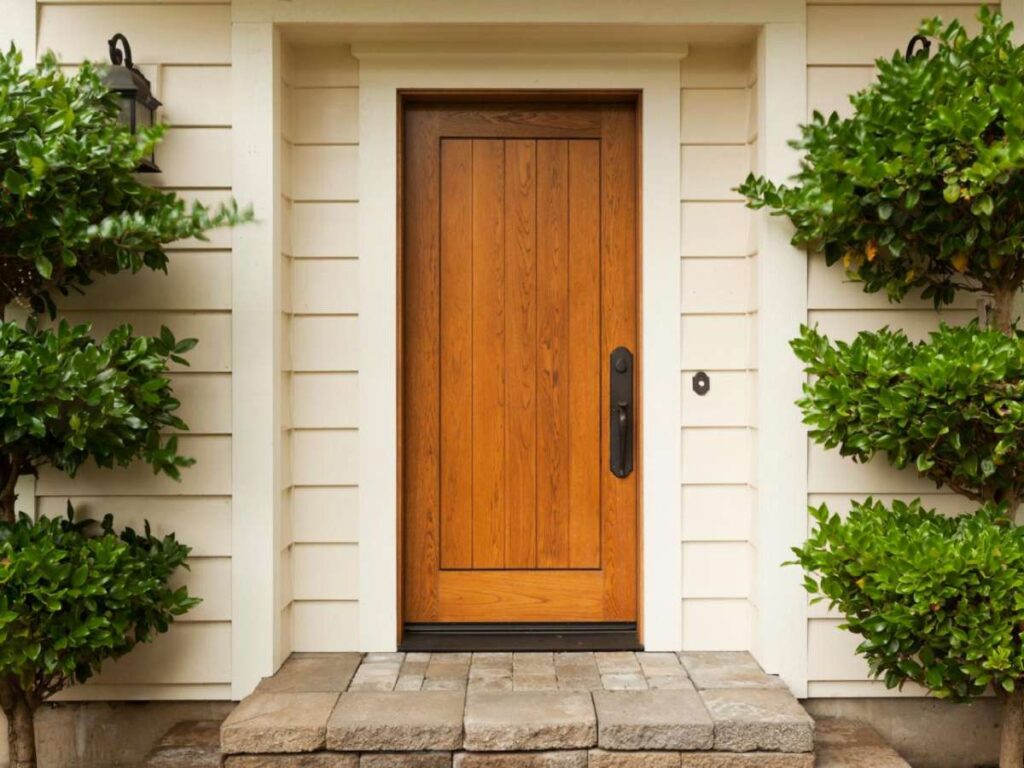
3. Appearance and Material Composition
Fiberglass gives you a consistent, low-maintenance look that holds steady for years. However, wood brings natural character and the freedom to refresh its style over time. Your choice depends on whether you value stability or evolving design.
Fiberglass Door
- Look: Can be molded to look like real wood using a pressed-in grain pattern. Often finished to mimic oak, walnut, or mahogany, but also available in smooth, simple designs for modern architecture. Appearance tends to stay consistent for many years.
- Feel: Surfaces can be smooth or lightly textured. Factory-applied finishes resist fading or peeling, though repainting or restaining later can be challenging.
- Aging: Holds its shape and finish over time with minimal visible changes, even in high-traffic or sun-exposed areas.
Wood Door
- Look: Shows natural grain, knots, and texture. No two doors are exactly alike, giving each one its own character.
- Feel: Solid and textured under your hand. Can be painted, stained, or sealed in various ways, and refinishing is straightforward if you want a fresh look.
- Aging: Changes in tone and texture with sun and weather exposure, which some owners see as adding personality. I once had a customer run their hand over a wood sample and say, “This just feels more real,” and they were right.
The front door does more than open and close. It greets every visitor and sets the tone for the entire property. How it looks and feels is one of the first impressions guests, residents, or customers will notice.
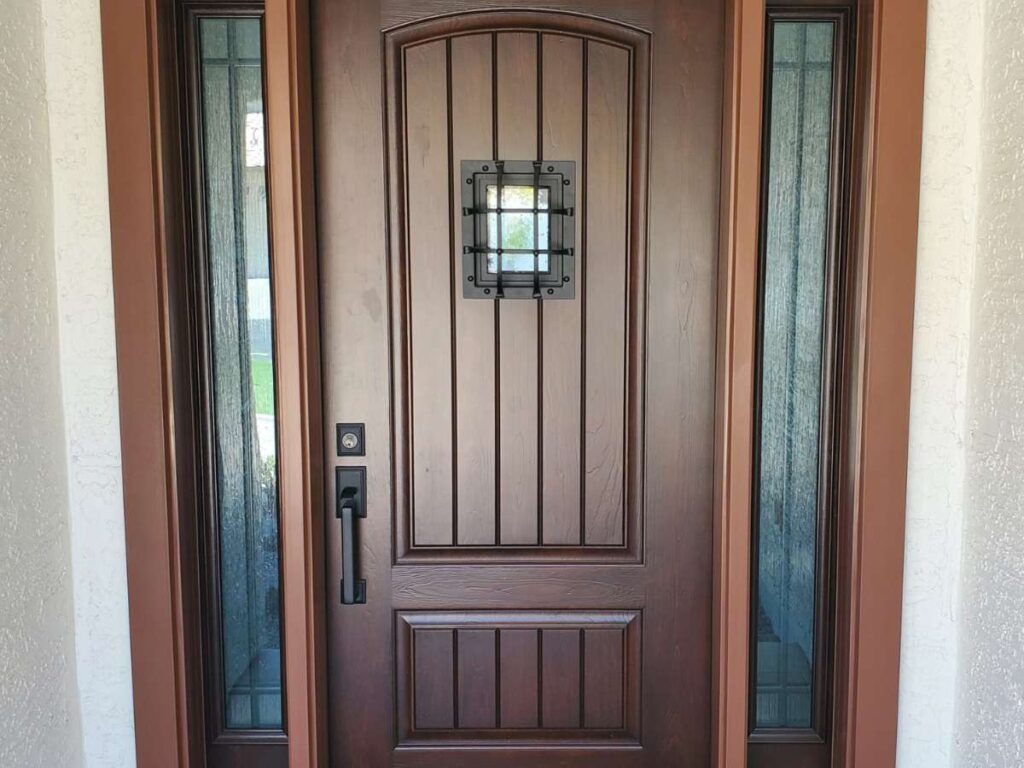
4. Durability and Weather Resistance
Fiberglass is the strongest option for exposed or high-stress environments. However, wood still performs well when maintained and protected, giving projects a traditional look that many property owners value. The choice depends on how much weather exposure your entryway gets and the level of upkeep you’re willing to manage.
Fiberglass Front Door
- Strength: Resists cracking, warping, and denting even under harsh conditions.
- Climate performance: Performs well in rainy areas, coastal zones with salty air, and hot, dry regions with strong sun exposure.
- Real-world example: I once worked with a client who replaced a failing wood door on a beachside property with fiberglass. Two years later, the fiberglass still looked nearly new despite salt, wind, and humidity.
- Care: Requires little upkeep beyond occasional cleaning.
Wood Front Door
- Strength: Solid and durable when maintained, but more sensitive to changes in temperature and moisture.
- Climate performance: Can swell during humid seasons and shrink in dry conditions, leading to sticking or gaps. Direct sun and rain will age the finish more quickly.
- Best settings: Works well for covered porches, homes in mild or dry climates, and locations where appearance is a higher priority than maximum weather resistance.
- Care: Needs regular sealing or painting to stay in good condition.
Choosing a front door isn’t just about looks it’s about whether it can handle daily use without becoming a problem. From my experience, fiberglass doors from Vallisco give property teams fewer headaches and lower long-term costs in challenging climates.
5. Maintenance Needs
If you want predictable upkeep with fewer surprises, fiberglass is the clear winner. It fits well in projects where long-term efficiency and reduced labor are priorities. However, wood can still be a strong choice if appearance is your top goal and you’re ready to commit resources to regular care. The real decision comes down to whether you value ease of management or the character that comes with natural material.
Fiberglass Front Door
- Upkeep level: Low-maintenance option that does not need yearly sealing or painting.
- Factory finish: Most come with a durable surface coating that resists fading, especially if treated with UV protection.
- Cleaning: Can be kept in good condition with a damp cloth and mild soap.
- Real-world example: I worked with a building manager who replaced five aging wood doors in a humid location with fiberglass. A year later, they reported no additional work had been needed.
- Typical schedule: Wipe clean every few months and check the surface once a year.
Wood Front Door
- Upkeep level: Requires more frequent attention due to natural material properties.
- Environmental impact: Sensitive to moisture, heat, and pests, which can lead to warping, rot, or damage without regular care.
- Maintenance tasks: Reseal or repaint every one to two years, touch up chipped areas, inspect soft spots, and watch for signs of pest activity.
- Operational consideration: For large-scale properties or hotel facilities, these tasks add up quickly in both labor and supply costs.
For many building projects, maintenance isn’t just an afterthought it’s part of the budget and workload planning. Property managers and engineering teams often need doors that stay reliable with minimal attention. The choice between fiberglass and wood usually comes down to how much time and cost you’re willing to dedicate to upkeep over the years.
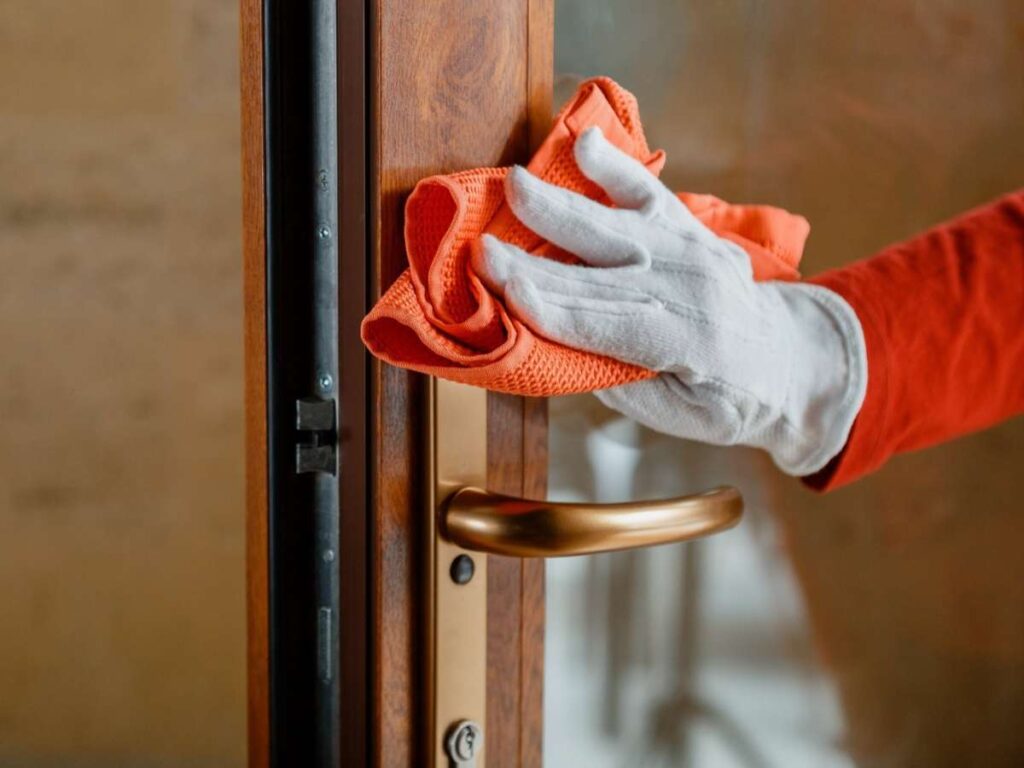
6. Insulation and Energy Efficiency
From what I’ve seen, fiberglass makes energy efficiency easier to achieve without constant adjustments. However, wood still earns its place in projects where the look carries more weight than performance, especially in regions with moderate weather.
Fiberglass Front Door
- Core design: Most fiberglass doors have a foam-filled core that helps slow down heat transfer. This design makes it harder for outside air to get in and for conditioned air to escape.
- Thermal rating: Often has a higher R-value compared to wood, meaning better resistance to heat flow. A higher R-value can help keep interior spaces more comfortable year-round.
- Performance benefits: Helps maintain steady indoor temperatures, which can reduce the strain on heating and cooling systems. Over time, this can lead to noticeable savings on energy bills.
- Real-world example: I worked with a property manager who upgraded to fiberglass doors after a cold winter caused guest complaints about drafts. The following month, they told me the lobby felt warmer and utility costs were lower.
- Climate suitability: Performs well in both extreme cold and high heat. This makes it a smart choice for buildings where energy performance is a key operational priority.
Wood Front Door
- Core design: Usually built from solid hardwood, which feels heavy and secure but does not block heat transfer as well as foam. Without added insulation, this type of core is less efficient in temperature control.
- Thermal limitations: Loses heat faster in winter and gains it faster in summer compared to insulated fiberglass. This can make surrounding areas feel less comfortable in climates with temperature extremes.
- Impact on operations: Over time, this can raise heating and cooling demands, leading to higher operating costs for large or multi-unit properties. The effect is especially noticeable in regions with harsh winters or hot summers.
- Best use cases: Works well in mild or moderate climates where extreme temperature swings are rare. Many choose it when design or architectural harmony matters more than top insulation performance.
Think of insulation as the hidden work your door does every single day. You don’t see it, but you notice the results in temperature stability and system performance.
For teams managing larger properties, even small improvements in thermal control can reduce strain on HVAC systems and extend their lifespan. That’s why the material inside your front door matters as much as its finish outside.
7. Security and Strength
I’ve found fiberglass to be the safer bet when security needs to stay consistent year after year, especially in high-traffic entries. However, wood still holds its own in projects where that heavy, traditional feel matters most as long as you’re prepared for the upkeep that comes with it.
Fiberglass Front Door
- Structural build: Made with reinforced cores that give it a solid, impact-resistant frame. This design helps it withstand heavy daily use without losing shape.
- Durability under stress: Resists dents, cracks, and warping caused by moisture or extreme temperatures. This means it stays secure even in demanding environments.
- Weather resilience: Handles exposure to rain, humidity, and heat without weakening. This makes it a dependable choice for properties exposed to harsh weather conditions.
- Real-world example: I worked on a project with several fiberglass entry doors in a busy facility. Years later, they still closed smoothly and provided the same solid feel as when they were installed.
- Lock readiness: Compatible with standard deadbolts, multi-point systems, and most modern smart locks. Many models arrive prepped for advanced hardware, reducing installation work.
Wood Front Door
- Structural build: Dense and naturally strong when new, offering a secure feel from the start. The weight adds a sense of stability that many property owners appreciate.
- Durability under stress: Can weaken over time from cracking, rotting, or swelling if not maintained properly. This makes upkeep critical for long-term strength.
- Weather resilience: Needs thorough sealing and periodic maintenance to prevent weather-related damage. Without it, structural performance can decline faster.
- Real-world example: I’ve seen wood doors in covered entryways last for decades, but in exposed areas, they required more frequent repairs to stay secure.
- Lock readiness: Works with most standard lock types and multi-point systems. Some newer smart locks may require adjustments or additional preparation during installation.
In any building project, security isn’t optional it’s essential. From my perspective, the door has to be more than impressive; it has to stay reliable under real pressure.
8. Design and Customization Options
From my experience, fiberglass doors usually give you practical flexibility right out of the box, while wood is the material you choose when every detail needs to match an exact design vision. In fast-paced projects, fiberglass often saves time. In custom builds, wood earns its place.
Fiberglass Front Door
- Panel styles: Manufactured with molded panels that can be smooth, grooved, or arched. This makes it possible to achieve both traditional and contemporary designs without additional fabrication.
- Surface finishes: Available in faux wood grain patterns stained to resemble oak, mahogany, or other hardwoods, as well as smooth painted finishes. These surfaces are engineered to keep their look with minimal upkeep.
- Glass integration: Can be ordered as pre-hung units with sidelights or transoms. This simplifies symmetry and speeds installation for large-scale or multi-unit projects.
- Hardware preparation: Frequently comes pre-cut for smart locks and standard hardware. This reduces on-site preparation time, which is valuable in high-volume installations.
Wood Front Door
- Custom shaping: Can be cut, curved, or arched to match specific architectural requirements. This is often used to complement existing structural or decorative elements.
- Decorative detailing: Supports carvings, inlays, and decorative grooves for a distinctive appearance. These details can be aligned with brand identity or design themes.
- Color and finish: Accepts any paint or stain color, making it easier to coordinate with surrounding woodwork or exterior finishes.
- Special features: Accommodates wrought iron inserts, stained glass, or shaped glass panels. Works with both traditional and modern locking systems, though some hardware may require extra fitting.
For many projects, fiberglass offers the right balance between design flexibility and long-term reliability. That’s why a manufacturer like Vallisco focuses on fiberglass solutions, giving property owners and builders options that work well in both residential and commercial settings.
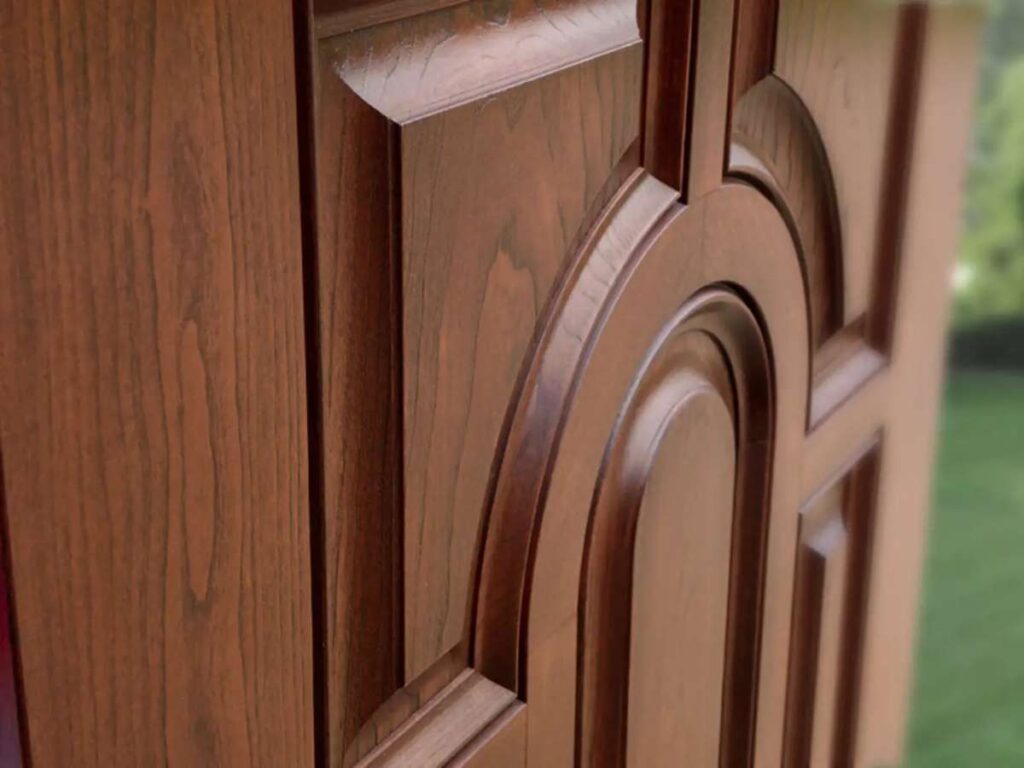
9. Environmental Impact and Sustainability
Fiberglass lasts longer and cuts down on replacement waste, which makes it practical for long-term planning. However, wood is renewable and easier to recycle, so it fits better if your priority is strong environmental credentials. The decision usually comes down to whether durability or material origin matters more for your project.
Fiberglass Front Door
- Material composition: Made from glass fibers combined with resin, giving it strength and durability. However, these materials are not biodegradable and are challenging to recycle.
- Resource sourcing: Often uses petroleum-based resins, which come from non-renewable fossil fuels. This can raise sustainability concerns for projects aiming to lower environmental impact.
- Longevity advantage: Can stay in service for many years with minimal maintenance, reducing the frequency of replacements and lowering waste generation.
- Air quality considerations: Some models feature low-VOC finishes that emit fewer fumes, improving indoor air quality and reducing harmful emissions during use.
Wood Front Door
- Material composition: A natural, renewable resource that can be responsibly harvested for sustainable construction. It naturally decomposes more easily than synthetic materials at the end of its life.
- Certification options: FSC-certified wood confirms sourcing from responsibly managed forests, supporting reforestation and biodiversity.
- End-of-life potential: Easier to recycle, repurpose, or use in reclaimed material projects compared to fiberglass.
- Air quality considerations: Can be treated with low-VOC stains or sealers to reduce chemical emissions and support healthier indoor environments.
Both fiberglass and wood bring value, just in different ways. Fiberglass gives peace of mind with its durability, while wood appeals to those who want a renewable, recyclable option.
How to Choose the Right Front Door for Your Project
Picking the right front door means looking beyond style. It needs to suit your building’s purpose, perform well in your climate, and last without creating unnecessary maintenance or replacement costs.
Start with Building Type
Choose a material that matches how the space will be used. A villa often benefits from the warmth of wood, but fiberglass offers a similar look with less upkeep. Hotels and B&Bs need doors that handle constant use, where fiberglass works well for durability and sound control. In moisture-prone spaces like greenhouses or utility areas, fiberglass resists swelling far better than wood.
Think About Climate and Budget
Look at how your climate will affect the door over time. Hot or humid climates tend to favor fiberglass because it stays stable and resists damage from moisture and heat. In dry or mild climates, wood can be a strong choice, especially if you want a more traditional appearance. If long-term operating costs are a deciding factor, fiberglass often proves more practical due to reduced maintenance needs.
Consider Longevity
Consider how much attention the door will need in the years ahead. Fiberglass typically offers lower upkeep and fewer repairs, which can reduce labor and material expenses over time. Wood, on the other hand, can deliver high visual appeal and even boost a property’s perceived value, especially when integrated with quality architectural design.
Conclusion
You’ve now seen how fiberglass and wood stack up from appearance and strength to upkeep and energy efficiency. I’ve watched both succeed when matched to the right project.
The real question is: what matters most to you: low maintenance, long life, or natural character? The right door will protect, impress, and perform for years.
Your property deserves a choice that works as hard as you do.
Ready to take the next step? Reach out to Vallisco today, and let’s find a solution that meets your goals and fits your vision.
Explore More of Our Resources
If you’re searching for more choices, explore our full collection of products. We’ve picked out some great options for you:
Still haven’t found what you’re looking for? Don’t hesitate to contact us. We’re available around the clock to assist you.


